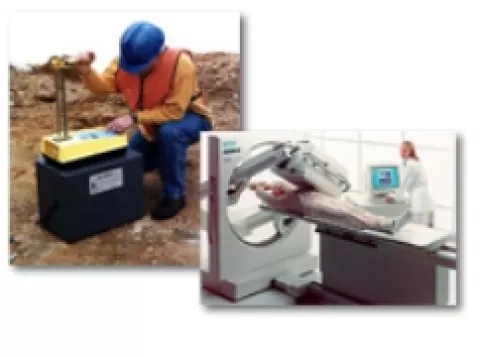Fusion Activities in Agreement States

As the U.S. advances toward the commercialization of fusion energy, several private-sector companies are pioneering technologies that could transform the future of clean power. In the United States, the U.S. Nuclear Regulatory Commission (NRC) regulates byproduct material associated with fusion machines except in states where the NRC has relinquished that authority to the state through formal agreements to regulate certain uses of nuclear materials. Early-stage commercial fusion activities are occurring within Agreement States. This shared responsibility for the regulation and oversight of byproduct material requires continued coordination and partnership as the regulatory framework for fusion machines continues to evolve.
Below are a few examples of companies actively engaged in fusion-related work within Agreement States.
Massachusetts – Commonwealth Fusion Systems
Based in Devens, Massachusetts, Commonwealth Fusion Systems (CFS) is developing a compact, high-field tokamak using high-temperature superconducting magnets. Their current project, SPARC, aims to demonstrate net energy from fusion in the coming years. As an Agreement State, the Commonwealth of Massachusetts oversees the possession, use, and production of radioactive material handling at the CFS facility. Although not funded under the Department of Energy’s Milestone-Based Fusion Development Program, CFS has actively engaged with the NRC on fusion regulatory matters. CFS also announced they will build their first grid-scale fusion power plant (ARC) in the Commonwealth of Virginia, which is also an Agreement State that will maintain oversight of radioactive material associated with ARC.
Tennessee – Type One Energy
Based in Knoxville, Tennessee, Type One Energy is developing a modular stellarator fusion power approach. Their “Infinity One” prototype is being deployed at Tennessee Valley Authority’s (TVA’s) former Bull Run coal plant, while their next generation facility—“Infinity Two,” a proposed 350 MWe pilot plant—is being planned in cooperation with the TVA and Tennessee Agreement State regulators. In February 2025, Type One Energy signed a cooperative agreement with TVA to conduct siting, environmental review, licensing, and development planning for Infinity Two, working with Oak Ridge National Laboratory and reusing existing fossil plant infrastructure. Additionally, Type One holds an exclusive license from Commonwealth Fusion Systems for its high-temperature superconducting magnet technology to use in their stellarator devices.
Washington – Helion Energy
Headquartered in Everett, Washington, Helion Energy is developing a pulsed, non-ignition fusion device that uses a field-reversed configuration (FRC) and a deuterium-helium-3 fuel mix. Their goal is not just to generate electricity from fusion, but to convert the fusion reaction’s energy directly into electricity using electromagnetic induction—eliminating the need for steam turbines. Helion’s sixth prototype, “Trenta,” demonstrated fusion plasma operations, and the company is currently constructing its seventh machine, “Polaris,” which aims to demonstrate electricity generation from fusion. The State of Washington provides oversight for the radiation-producing devices and radioactive materials used in their fusion research and development activities.
Looking Ahead
As fusion technologies progress toward deployment, the NRC and Agreement States are working to ensure a coherent, risk-informed, and adaptable regulatory approach. Continued collaboration is essential to support innovation while protecting public health and safety.
Page Last Reviewed/Updated Monday, November 03, 2025
Page Last Reviewed/Updated Monday, November 03, 2025


